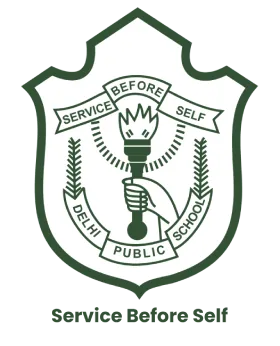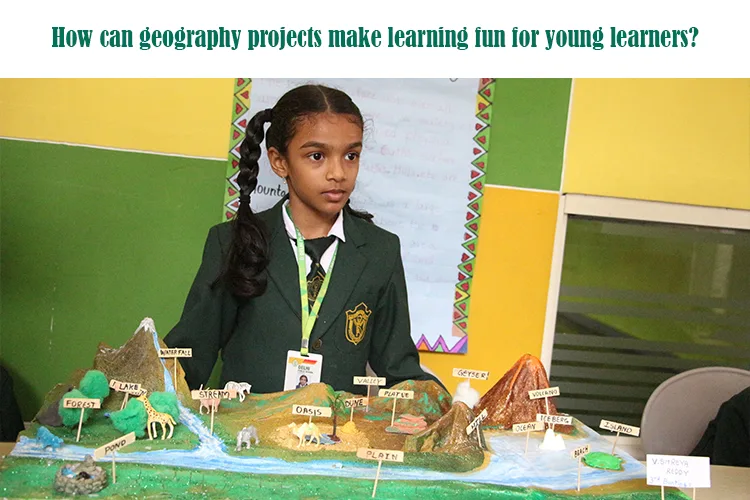Geography is a field that inspires wonder at the world around us and teaches us about our place on Earth. It is a study of the physical features of our planet that upholds global citizenship. Geography is more than just maps and capital cities to young learners; it’s also the world of wonder they can see, realising a culture every other week or so. Geography projects can turn lessons from mandatory into magical, encouraging critical thought, creative thinking and a lifelong adventure.
Why are geography projects important?
- Sometimes traditional geography lessons can come across as awkward and less engaging for the young child. This is why projects are a much-needed dynamic; they actively engage children by placing them in participatory roles. Incorporating hands-on experiences is crucial.
- When children conduct research, create, and answer questions as if they are subject matter experts, they learn more effectively. Projects provide the key skills of research and data analysis, problem-solving, critical thinking and communication.
- Students have fun learning and are curious to know more—and that is how we want learning to be! Projects will help children see real-world connections between their classroom studies and increase the relevance of geography. Geography generally unites all subjects, like the arts and sciences, to offer students a more comprehensive learning experience.
Project ideas to ignite young minds
Geography projects can transform abstract concepts into tangible, engaging activities that captivate young minds. These projects make learning fun and foster a deeper understanding of the world around us. By incorporating hands-on activities and real-world applications, we can inspire a lifelong love of learning and exploration in our students.
Mapping our world:
- Have a treasure hunt built:
The children are going to make a treasure map for their home, school, or neighbourhood with symbols, landmarks, and cardinal directions. They learn spatial relations and map reading doing these projects.
- 3D model building of the neighbourhood:
The children may use recycled items to make a 3-D model of your locality with houses, parks and all other landmarks. This project also helps them learn about scale and spatial relations.
- Track the route of a day in your life:
The children can mark, step by step, where they travel from home to school and back, creating a map showcasing everything they observe on their trip. It will, in general, help them conceptualise where and why people move.
Picking different cultures
- Construct a cultural scrapbook:
Children can decide if they want to learn about a country and then assemble a scrapbook with pictures, facts, and stories about the culture of the people living there (along with their traditions, food, and clothes). This project brings cultural awareness and appreciation.
- Plan a cultural exchange online:
Children can interact with students from another country or culture about their lives and learn from others by using video conferencing online tools or any form of the internet. This post fosters intercultural communication and global citizenship.
- Prepare a meal from a different country:
Young children can learn a new culinary skill together as a family by researching and cooking a well-known traditional dish from another country. It is a fun & kinaesthetic way of experiencing cultures.
Understanding the earth’s physical features:
- Build a volcano model:
Children can build a simple model of the volcano at home using baking soda. The model simulates a volcanic eruption, and I can incorporate other household items to demonstrate volcanic activity. This project offers experiential learning about geologic processes.
- Build a landform diorama:
In this one, kids use clay and other natural materials, such as sand, to make a diorama of the landforms—mountains, valleys, rivers, or deserts. They experience multiple visual Earth surfaces; this project helps them see the diversity of Earth.
- Weather patterns investigate:
Keep a weather data log (temperature, rainfall, wind direction) to plot and graph weather trends for the area where children live. This project helps children understand some of the elementary meteorological terms.
Investigating environmental phenomena:
- Carrying out a recycling audit:
We can also do a recycling audit and ask the children to carry one at home or in school. They should follow it independently while analysing the types & volumes and see their steps for better recycling practices, such as reducing waste. So this project raises environmental and responsible consciousness.
- Study municipal earth-related conundrums:
Children should investigate the issues of environmental degradation in their local municipality, such as pollution, deforestation, or water scarcity, and propose solutions to address them. This exercise triggers critical thinking and problem-solving abilities.
- Design a public health awareness campaign:
The children are going to make a poster, brochure and video on the environment, raising alarm about this and getting others involved. The project is a link between intercommunicative skills.
Tips for implementing geography projects:
- Begin by setting a goal. State the learning objectives and outcomes of this project.
- Provide concise directions and expectations. Make sure you comprehend the project requirements of the children.
- Provide resources, such as physical books, maps, digital resources, and others, that they will use for their research.
- Establish space to voice our understandings and the strategies we are figuring out.
- Help them Collaborate: Promote collaboration and peer learning.
- Support students in presenting and interacting. Provide a platform for children to share their findings by discussing their topics.
- Use multiple forms of assessment to combine observations, a demonstration, or a portfolio of written work for assessing learning objectives.
Different geography projects are extremely effective tools to draw out childhood curiosity and ignite a love of discovery. By providing hands-on experiences that children can touch, do, and engage with, these projects help kids build a richer understanding of their world, develop critical thought processes, and reinforce facets of citizenship as global citizens. Project-based learning is a powerful way for educators and parents to awaken young minds’ curiosity and empower lifelong journeys of geographical exploration. As one of the top educational brands in India, we believe that engaging and interactive projects can transform the way children learn and perceive the world around them.


